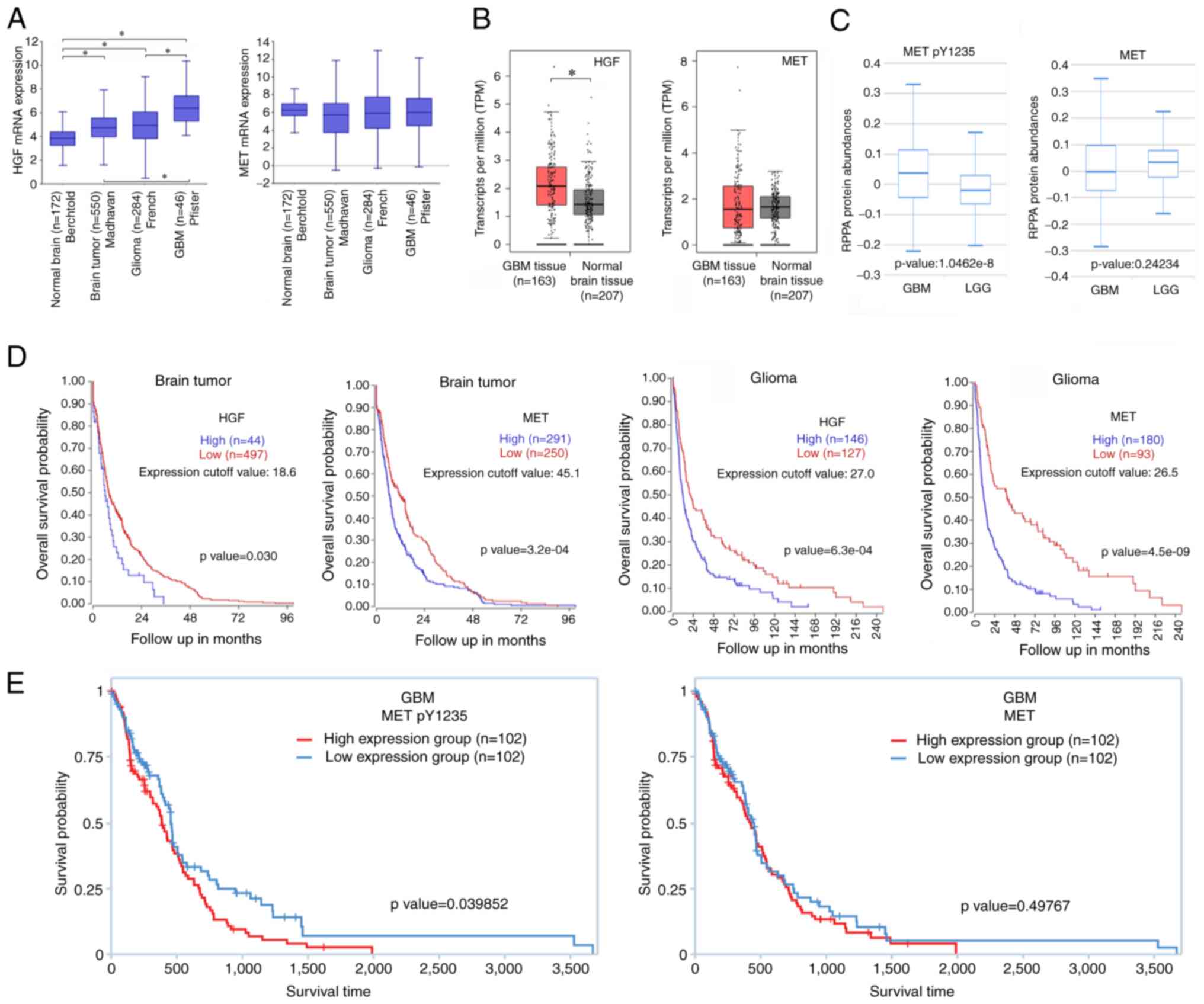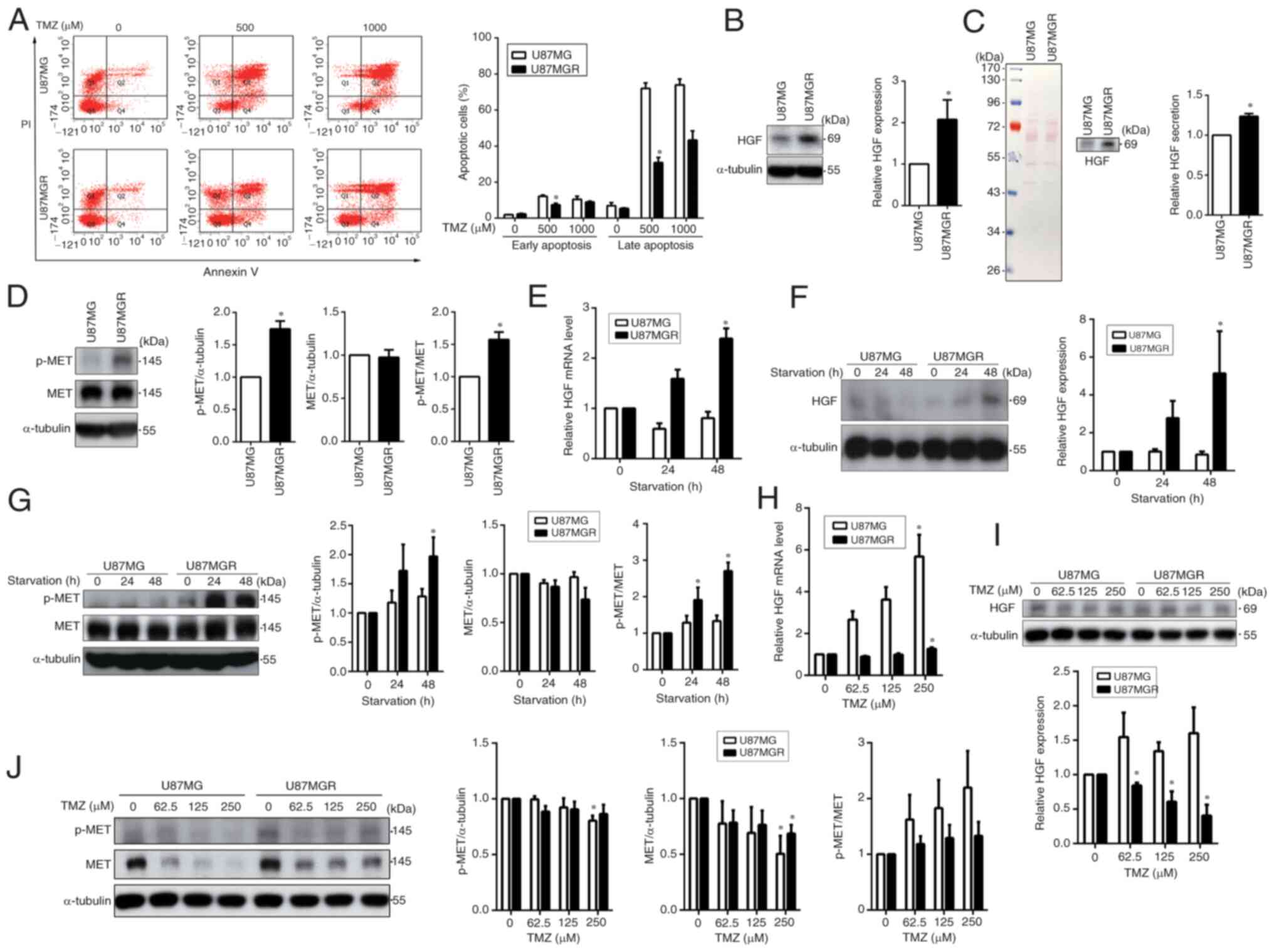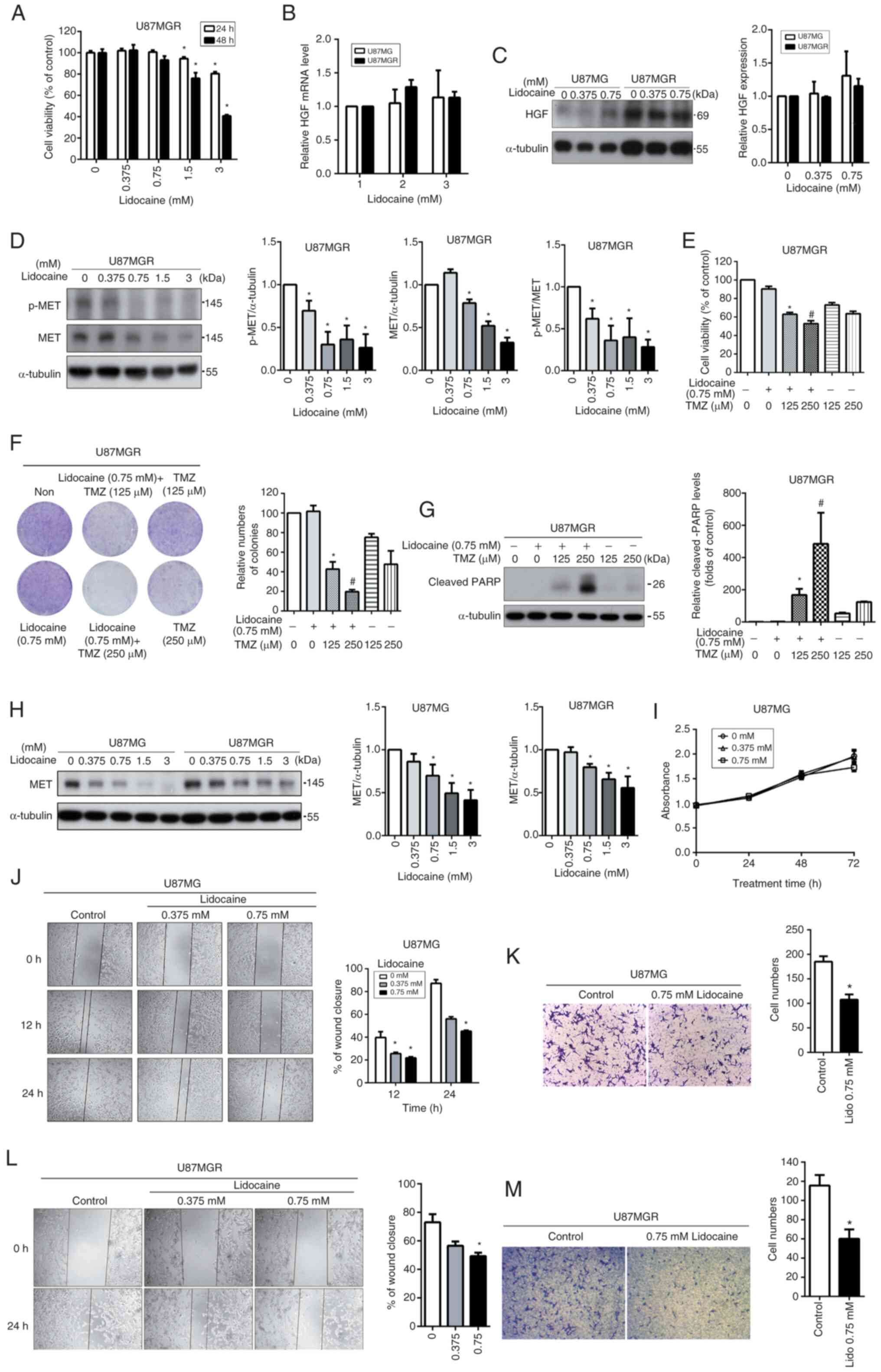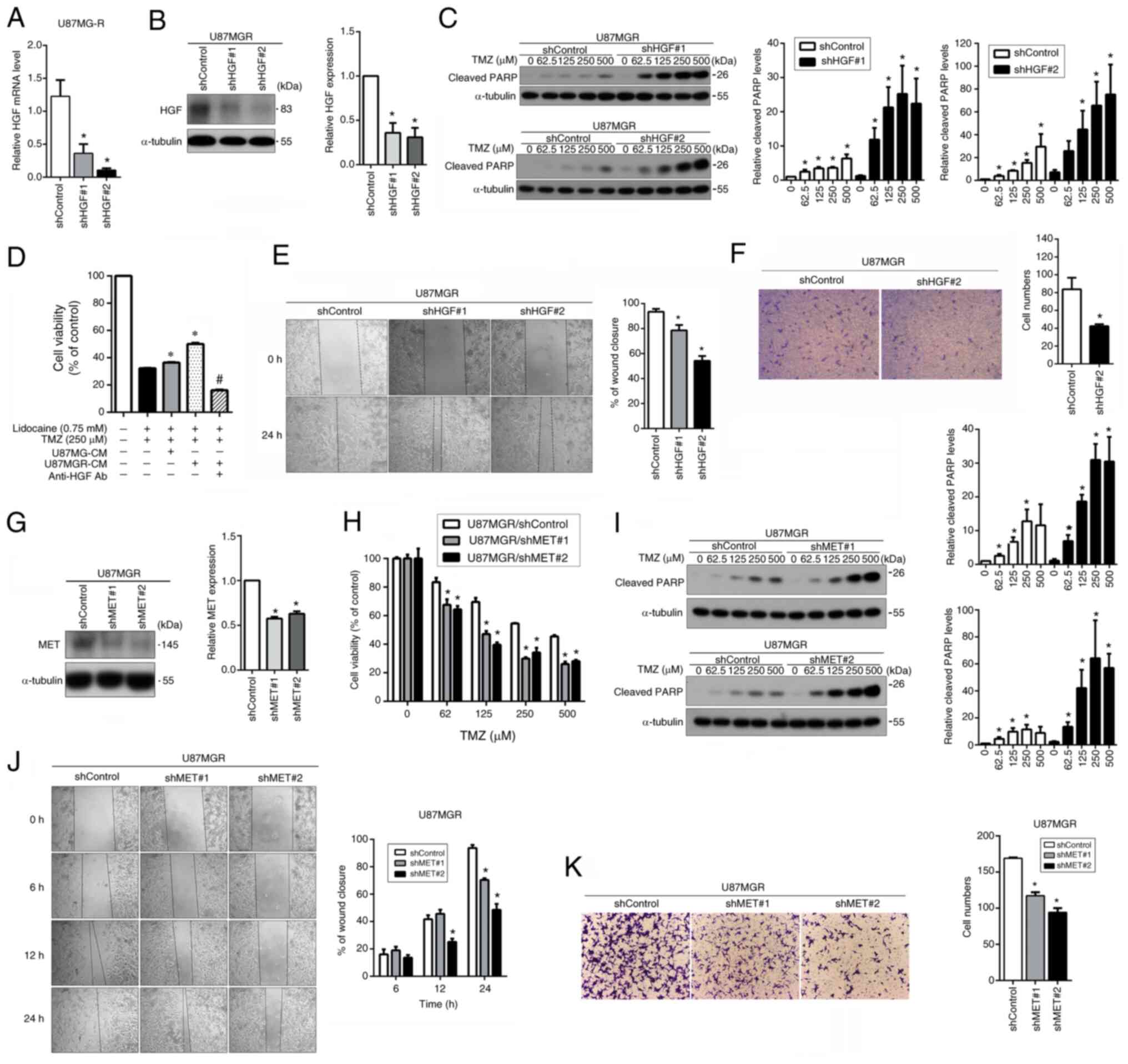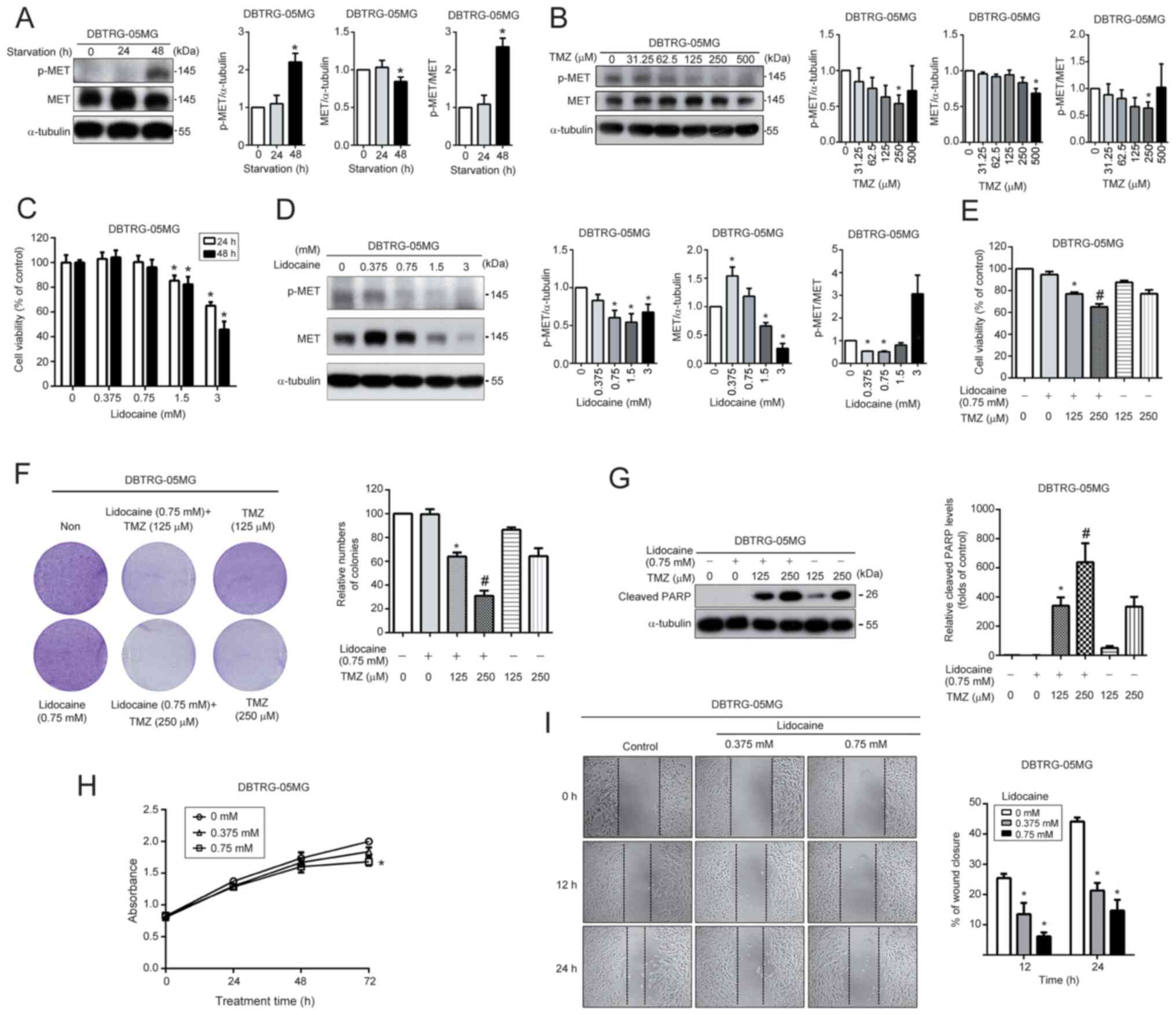|
1
|
Louis DN, Perry A, Wesseling P, Brat DJ,
Cree IA, Figarella-Branger D, Hawkins C, Ng HK, Pfister SM,
Reifenberger G, et al: The 2021 WHO classification of tumors of the
central nervous system: A summary. Neuro Oncol. 23:1231–1251. 2021.
View Article : Google Scholar : PubMed/NCBI
|
|
2
|
Ostrom QT, Gittleman H, Farah P, Ondracek
A, Chen Y, Wolinsky Y, Stroup NE, Kruchko C and Barnholtz-Sloan JS:
CBTRUS statistical report: Primary brain and central nervous system
tumors diagnosed in the United States in 2006–2010. Neuro Oncol. 15
(Suppl 2):ii1–56. 2013. View Article : Google Scholar : PubMed/NCBI
|
|
3
|
Stupp R, Mason WP, van den Bent MJ, Weller
M, Fisher B, Taphoorn MJ, Belanger K, Brandes AA, Marosi C, Bogdahn
U, et al: Radiotherapy plus concomitant and adjuvant temozolomide
for glioblastoma. N Engl J Med. 352:987–996. 2005. View Article : Google Scholar : PubMed/NCBI
|
|
4
|
Koshy M, Villano JL, Dolecek TA, Howard A,
Mahmood U, Chmura SJ, Weichselbaum RR and McCarthy BJ: Improved
survival time trends for glioblastoma using the SEER 17
population-based registries. J Neurooncol. 107:207–212. 2012.
View Article : Google Scholar : PubMed/NCBI
|
|
5
|
Fu J, Su X, Li Z, Deng L, Liu X, Feng X
and Peng J: HGF/c-MET pathway in cancer: From molecular
characterization to clinical evidence. Oncogene. 40:4625–4651.
2021. View Article : Google Scholar : PubMed/NCBI
|
|
6
|
Trusolino L, Bertotti A and Comoglio PM:
MET signalling: Principles and functions in development, organ
regeneration and cancer. Nat Rev Mol Cell Biol. 11:834–848. 2010.
View Article : Google Scholar : PubMed/NCBI
|
|
7
|
Mulcahy EQX, Colόn RR and Abounader R:
HGF/MET signaling in malignant brain tumors. Int J Mol Sci.
21:75462020. View Article : Google Scholar : PubMed/NCBI
|
|
8
|
Arrieta O, Garcia E, Guevara P,
Garcia-Navarrete R, Ondarza R, Rembao D and Sotelo J: Hepatocyte
growth factor is associated with poor prognosis of malignant
gliomas and is a predictor for recurrence of meningioma. Cancer.
94:3210–3218. 2002. View Article : Google Scholar : PubMed/NCBI
|
|
9
|
Garcia-Navarrete R, Garcia E, Arrieta O
and Sotelo J: Hepatocyte growth factor in cerebrospinal fluid is
associated with mortality and recurrence of glioblastoma, and could
be of prognostic value. J Neurooncol. 97:347–351. 2010. View Article : Google Scholar : PubMed/NCBI
|
|
10
|
Liu W, Fu Y, Xu S, Ding F, Zhao G, Zhang
K, Du C, Pang B and Pang Q: c-Met expression is associated with
time to recurrence in patients with glioblastoma multiforme. J Clin
Neurosci. 18:119–121. 2011. View Article : Google Scholar : PubMed/NCBI
|
|
11
|
Olmez OF, Cubukcu E, Evrensel T, Kurt M,
Avci N, Tolunay S, Bekar A, Deligonul A, Hartavi M, Alkis N and
Manavoglu O: The immunohistochemical expression of c-Met is an
independent predictor of survival in patients with glioblastoma
multiforme. Clin Transl Oncol. 16:173–177. 2014. View Article : Google Scholar : PubMed/NCBI
|
|
12
|
Petterson SA, Dahlrot RH, Hermansen SK, KA
Munthe S, Gundesen MT, Wohlleben H, Rasmussen T, Beier CP, Hansen S
and Kristensen BW: High levels of c-Met is associated with poor
prognosis in glioblastoma. J Neurooncol. 122:517–527. 2015.
View Article : Google Scholar : PubMed/NCBI
|
|
13
|
Tabouret E, Denicolai E, Delfino C,
Graillon T, Boucard C, Nanni I, Padovani L, Figarella-Branger D and
Chinot O: Changes in PlGF and MET-HGF expressions in paired initial
and recurrent glioblastoma. J Neurooncol. 130:431–437. 2016.
View Article : Google Scholar : PubMed/NCBI
|
|
14
|
Theofanis T, Chalouhi N, Dalyai R, Starke
RM, Jabbour P, Rosenwasser RH and Tjoumakaris S: Microsurgery for
cerebral arteriovenous malformations: postoperative outcomes and
predictors of complications in 264 cases. Neurosurg Focus.
37:E102014. View Article : Google Scholar : PubMed/NCBI
|
|
15
|
Hu H, Mu Q, Bao Z, Chen Y, Liu Y, Chen J,
Wang K, Wang Z, Nam Y, Jiang B, et al: Mutational landscape of
secondary glioblastoma guides MET-Targeted trial in brain tumor.
Cell. 175:1665–1678.e18. 2018. View Article : Google Scholar : PubMed/NCBI
|
|
16
|
Hermanns H, Hollmann MW, Stevens MF, Lirk
P, Brandenburger T, Piegeler T and Werdehausen R: Molecular
mechanisms of action of systemic lidocaine in acute and chronic
pain: A narrative review. Br J Anaesth. 123:335–349. 2019.
View Article : Google Scholar : PubMed/NCBI
|
|
17
|
Zhang C, Xie C and Lu Y: Local anesthetic
lidocaine and cancer: Insight into tumor progression and
recurrence. Front Oncol. 11:6697462021. View Article : Google Scholar : PubMed/NCBI
|
|
18
|
Sakaguchi M, Kuroda Y and Hirose M: The
antiproliferative effect of lidocaine on human tongue cancer cells
with inhibition of the activity of epidermal growth factor
receptor. Anesth Analg. 102:1103–1107. 2006. View Article : Google Scholar : PubMed/NCBI
|
|
19
|
Hirata M, Sakaguchi M, Mochida C, Sotozono
C, Kageyama K, Kuroda Y and Hirose M: Lidocaine inhibits tyrosine
kinase activity of the epidermal growth factor receptor and
suppresses proliferation of corneal epithelial cells.
Anesthesiology. 100:1206–1210. 2004. View Article : Google Scholar : PubMed/NCBI
|
|
20
|
Sun H and Sun Y: Lidocaine inhibits
proliferation and metastasis of lung cancer cell via regulation of
miR-539/EGFR axis. Artif Cells Nanomed Biotechnol. 47:2866–2874.
2019. View Article : Google Scholar : PubMed/NCBI
|
|
21
|
Sui H, Lou A, Li Z and Yang J: Lidocaine
inhibits growth, migration and invasion of gastric carcinoma cells
by up-regulation of miR-145. BMC Cancer. 19:2332019. View Article : Google Scholar : PubMed/NCBI
|
|
22
|
Sun D, Li YC and Zhang XY: Lidocaine
promoted ferroptosis by targeting miR-382-5p/SLC7A11 axis in
ovarian and breast cancer. Front Pharmacol. 12:6812232021.
View Article : Google Scholar : PubMed/NCBI
|
|
23
|
Xing W, Chen DT, Pan JH, Chen YH, Yan Y,
Li Q, Xue RF, Yuan YF and Zeng WA: Lidocaine Induces apoptosis and
suppresses tumor growth in human hepatocellular carcinoma cells in
vitro and in a xenograft model in vivo. Anesthesiology.
126:868–881. 2017. View Article : Google Scholar : PubMed/NCBI
|
|
24
|
Mirshahidi S, Shields TG, de
Necochea-Campion R, Yuan X, Janjua A, Williams NL, Mirshahidi HR,
Reeves ME, Duerksen-Hughes P and Zuckerman LM: Bupivacaine and
lidocaine induce apoptosis in osteosarcoma tumor cells. Clin Orthop
Relat Res. 479:180–194. 2021. View Article : Google Scholar : PubMed/NCBI
|
|
25
|
Wang Y, Xie J, Liu W, Zhang R, Huang S and
Xing Y: Lidocaine sensitizes the cytotoxicity of 5-fluorouacil in
melanoma cells via upregulation of microRNA-493. Pharmazie.
72:663–669. 2017.PubMed/NCBI
|
|
26
|
Yang X, Zhao L, Li M, Yan L, Zhang S, Mi
Z, Ren L and Xu J: Lidocaine enhances the effects of
chemotherapeutic drugs against bladder cancer. Sci Rep. 8:5982018.
View Article : Google Scholar : PubMed/NCBI
|
|
27
|
Zhang X, Pang W, Liu H and Wang J:
Lidocine potentiates the cytotoxicity of 5-fluorouracil to
choriocarcinoma cells by downregulating ABC transport proteins
expression. J Cell Biochem. 120:16533–16542. 2019. View Article : Google Scholar : PubMed/NCBI
|
|
28
|
Yang Q, Zhang Z, Xu H and Ma C: Lidocaine
alleviates cytotoxicity-resistance in lung cancer A549/DDP cells
via down-regulation of miR-21. Mol Cell Biochem. 456:63–72. 2019.
View Article : Google Scholar : PubMed/NCBI
|
|
29
|
Zhang X, Gu G, Li X and Zhang C: Lidocaine
alleviates cisplatin resistance and inhibits migration of
MGC-803/DDP cells through decreasing miR-10b. Cell Cycle.
19:2530–2537. 2020. View Article : Google Scholar : PubMed/NCBI
|
|
30
|
Wen J, Li X, Ding Y, Zheng S and Xiao Y:
Lidocaine inhibits glioma cell proliferation, migration and
invasion by modulating the circEZH2/miR-181b-5p pathway.
Neuroreport. 32:52–60. 2021. View Article : Google Scholar : PubMed/NCBI
|
|
31
|
Li D, Yang X, Li B, Yang C, Sun J, Yu M,
Wang H and Lu Y: Lidocaine liposome modified with folic acid
suppresses the proliferation and motility of glioma cells via
targeting the PI3K/AKT pathway. Exp Ther Med. 22:10252021.
View Article : Google Scholar : PubMed/NCBI
|
|
32
|
Leng T, Lin S, Xiong Z and Lin J:
Lidocaine suppresses glioma cell proliferation by inhibiting TRPM7
channels. Int J Physiol Pathophysiol Pharmacol. 9:8–15.
2017.PubMed/NCBI
|
|
33
|
Lu J, Ju YT, Li C, Hua FZ, Xu GH and Hu
YH: Effect of TRPV1 combined with lidocaine on cell state and
apoptosis of U87-MG glioma cell lines. Asian Pac J Trop Med.
9:288–292. 2016. View Article : Google Scholar : PubMed/NCBI
|
|
34
|
Fan X, Yang H, Zhao C, Hu L, Wang D, Wang
R, Fang Z and Chen X: Local anesthetics impair the growth and
self-renewal of glioblastoma stem cells by inhibiting
ZDHHC15-mediated GP130 palmitoylation. Stem Cell Res Ther.
12:1072021. View Article : Google Scholar : PubMed/NCBI
|
|
35
|
Zeng W, Xing ZT, Tan MY, Wu YW and Zhang
CY: Lidocaine suppresses the malignant behavior of gastric cancer
cells via the c-Met/c-Src pathway. Exp Ther Med. 21:4242021.
View Article : Google Scholar : PubMed/NCBI
|
|
36
|
Livak KJ and Schmittgen TD: Analysis of
relative gene expression data using real-time quantitative PCR and
the 2(−Delta Delta C(T)) Method. Methods. 25:402–408. 2001.
View Article : Google Scholar : PubMed/NCBI
|
|
37
|
Yang JT, Lee IN, Huang C, Huang HC, Wu YP,
Chong ZY and Chen JC: ADAM17 confers temozolomide resistance in
human glioblastoma cells and miR-145 regulates its expression. Int
J Mol Sci. 24:77032023. View Article : Google Scholar : PubMed/NCBI
|
|
38
|
Han BS, Jung KH, Lee JE, Yoon YC, Ko S,
Park MS, Lee YJ, Kim SE, Cho YJ, Lee P, et al: Lidocaine enhances
the efficacy of palbociclib in triple-negative breast cancer. Am J
Cancer Res. 12:3083–3098. 2022.PubMed/NCBI
|
|
39
|
Liu T, Jiang F, Yu LY and Wu YY: Lidocaine
represses proliferation and cisplatin resistance in cutaneous
squamous cell carcinoma via miR-30c/SIRT1 regulation.
Bioengineered. 13:6359–6370. 2022. View Article : Google Scholar : PubMed/NCBI
|
|
40
|
Chen J, Jiao Z, Wang A and Zhong W:
Lidocaine inhibits melanoma cell proliferation by regulating ERK
phosphorylation. J Cell Biochem. 120:6402–6408. 2019. View Article : Google Scholar : PubMed/NCBI
|
|
41
|
Gao R, Cao T, Chen H, Cai J, Lei M and
Wang Z: Nav1.5-E3 antibody inhibits cancer progression. Transl
Cancer Res. 8:44–50. 2019. View Article : Google Scholar : PubMed/NCBI
|
|
42
|
Tierney KJ, Murano T and Natal B:
Lidocaine-Induced cardiac arrest in the emergency department:
Effectiveness of lipid therapy. J Emerg Med. 50:47–50. 2016.
View Article : Google Scholar : PubMed/NCBI
|
|
43
|
Chu R, Umukoro N, Greer T, Roberts J,
Adekoya P, Odonkor CA, Hagedorn JM, Olatoye D, Urits I, Orhurhu MS,
et al: Intravenous lidocaine infusion for the management of early
postoperative pain: A comprehensive review of controlled trials.
Psychopharmacol Bull. 50 (4 Suppl 1):S216–S259. 2020.
|
|
44
|
Greenwood E, Nimmo S, Paterson H, Homer N
and Foo I: Intravenous lidocaine infusion as a component of
multimodal analgesia for colorectal surgery-measurement of plasma
levels. Perioper Med (Lond). 8:12019. View Article : Google Scholar : PubMed/NCBI
|
|
45
|
Beaussier M, Delbos A, Maurice-Szamburski
A, Ecoffey C and Mercadal L: Perioperative use of intravenous
lidocaine. Drugs. 78:1229–1246. 2018. View Article : Google Scholar : PubMed/NCBI
|
|
46
|
Li K, Yang J and Han X: Lidocaine
sensitizes the cytotoxicity of cisplatin in breast cancer cells via
up-regulation of RARβ2 and RASSF1A demethylation. Int J Mol Sci.
15:23519–23536. 2014. View Article : Google Scholar : PubMed/NCBI
|
|
47
|
Gao X, Yang H, Wu M, Shi K, Zhou C, Peng J
and Yang Q: Targeting delivery of lidocaine and cisplatin by
nanogel enhances chemotherapy and alleviates metastasis. ACS Appl
Mater Interfaces. 10:25228–25240. 2018. View Article : Google Scholar : PubMed/NCBI
|
|
48
|
Yang Y, Sun J, Peng F, Liu H, Zhao G, Chen
J, Zhang W and Qiu F: Enhanced antitumor activity of lidocaine
nanoparticles encapsulated by a self-assembling peptide. Front
Pharmacol. 13:7708922022. View Article : Google Scholar : PubMed/NCBI
|
|
49
|
Zhang H, Yang L, Zhu X, Zhu M, Sun Z, Cata
JP, Chen W and Miao C: Association between intraoperative
intravenous lidocaine infusion and survival in patients undergoing
pancreatectomy for pancreatic cancer: A retrospective study. Br J
Anaesth. 125:141–148. 2020. View Article : Google Scholar : PubMed/NCBI
|
|
50
|
Zhang H, Gu J, Qu M, Sun Z, Huang Q, Cata
JP, Chen W and Miao C: Effects of intravenous infusion of lidocaine
on short-term outcomes and survival in patients undergoing surgery
for ovarian cancer: A retrospective propensity score matching
study. Front Oncol. 11:6898322022. View Article : Google Scholar : PubMed/NCBI
|
|
51
|
Zhao K, Dong Y, Su G, Wang Y, Ji T, Wu N,
Cui X, Li W, Yang Y and Chen X: Effect of systemic lidocaine on
postoperative early recovery quality in patients undergoing
supratentorial tumor resection. Drug Des Devel Ther. 16:1171–1181.
2022. View Article : Google Scholar : PubMed/NCBI
|
|
52
|
Yamamoto S, Wakimoto H, Aoyagi M, Hirakawa
K and Hamada H: Modulation of motility and proliferation of glioma
cells by hepatocyte growth factor. Jpn J Cancer Res. 88:564–577.
1997. View Article : Google Scholar : PubMed/NCBI
|
|
53
|
Zhao Y, Sun Y, Zhang H, Liu X, Du W, Li Y,
Zhang J, Chen L and Jiang C: HGF/MET signaling promotes glioma
growth via up-regulation of Cox-2 expression and PGE2 production.
Int J Clin Exp Pathol. 8:3719–3726. 2015.PubMed/NCBI
|
|
54
|
Laterra J, Nam M, Rosen E, Rao JS, Lamszus
K, Goldberg ID and Johnston P: Scatter factor/hepatocyte growth
factor gene transfer enhances glioma growth and angiogenesis in
vivo. Lab Invest. 76:565–577. 1997.PubMed/NCBI
|
|
55
|
Eckerich C, Zapf S, Fillbrandt R, Loges S,
Westphal M and Lamszus K: Hypoxia can induce c-Met expression in
glioma cells and enhance SF/HGF-induced cell migration. Int J
Cancer. 121:276–283. 2007. View Article : Google Scholar : PubMed/NCBI
|
|
56
|
Li W, Xiong X, Abdalla A, Alejo S, Zhu L,
Lu F and Sun H: HGF-induced formation of the MET-AXL-ELMO2-DOCK180
complex promotes RAC1 activation, receptor clustering, and cancer
cell migration and invasion. J Biol Chem. 293:15397–15418. 2018.
View Article : Google Scholar : PubMed/NCBI
|
|
57
|
Jun HJ, Acquaviva J, Chi D, Lessard J, Zhu
H, Woolfenden S, Bronson RT, Pfannl R, White F, Housman DE, et al:
Acquired MET expression confers resistance to EGFR inhibition in a
mouse model of glioblastoma multiforme. Oncogene. 31:3039–3050.
2012. View Article : Google Scholar : PubMed/NCBI
|
|
58
|
Casey BJ, Somerville LH, Gotlib IH, Ayduk
O, Franklin NT, Askren MK, Jonides J, Berman MG, Wilson NL,
Teslovich T, et al: Behavioral and neural correlates of delay of
gratification 40 years later. Proc Natl Acad Sci USA.
108:14998–15003. 2011. View Article : Google Scholar : PubMed/NCBI
|



